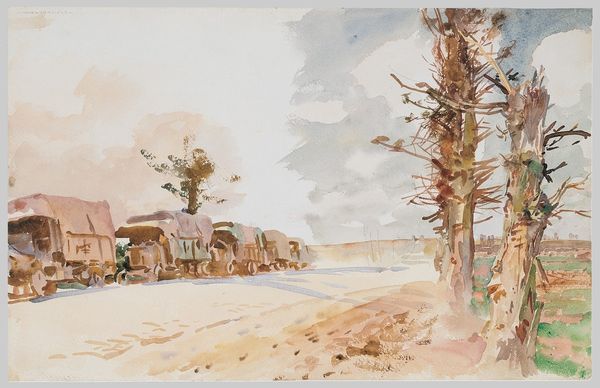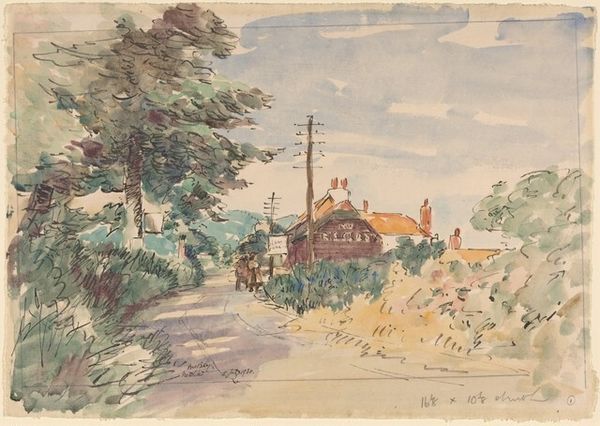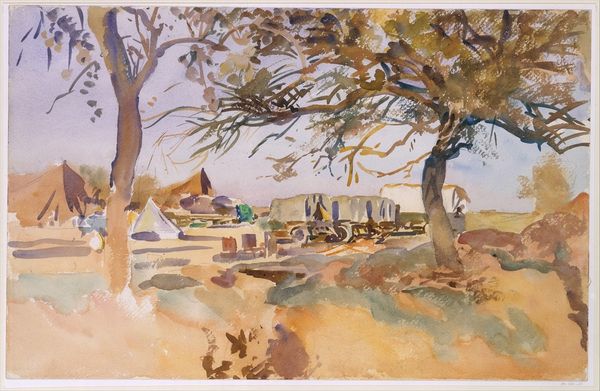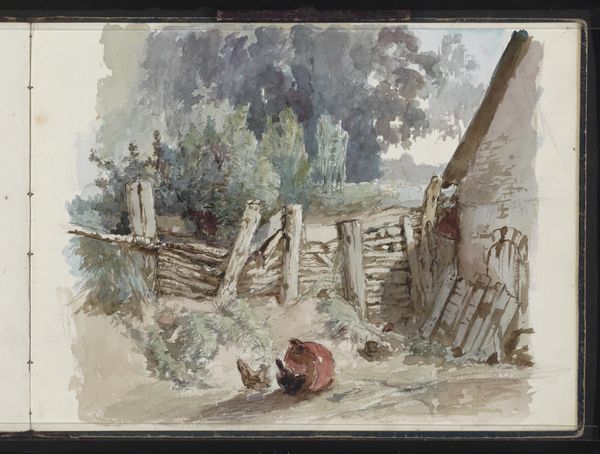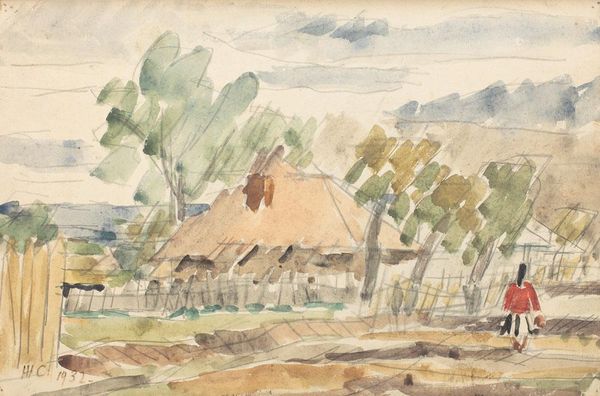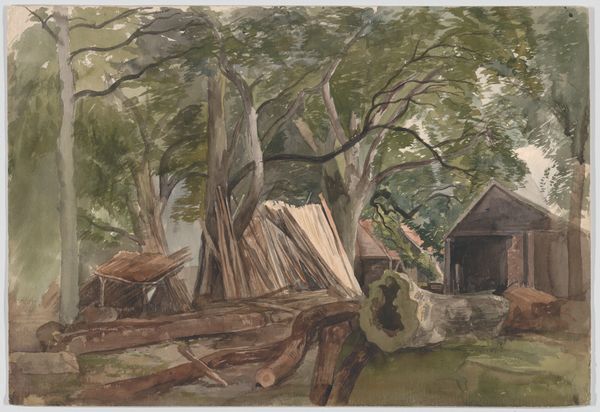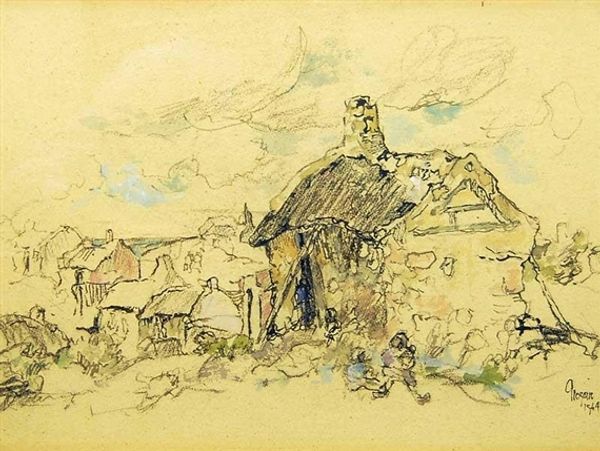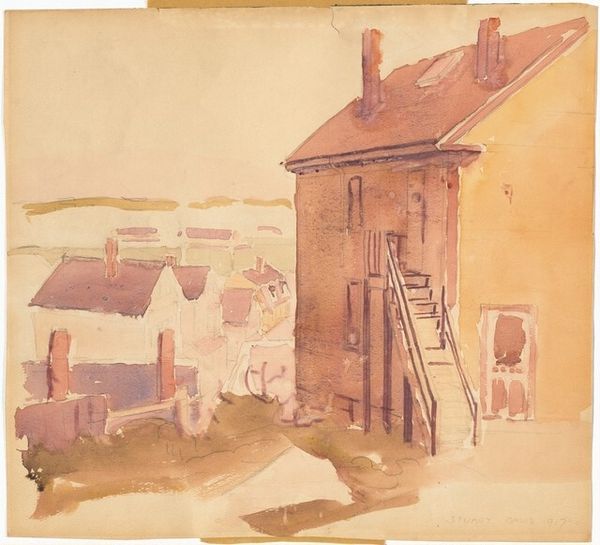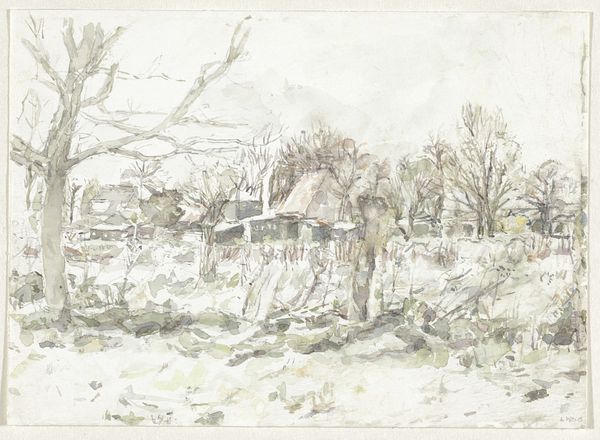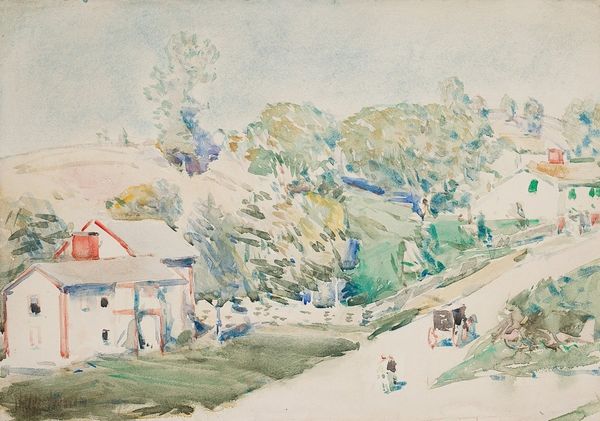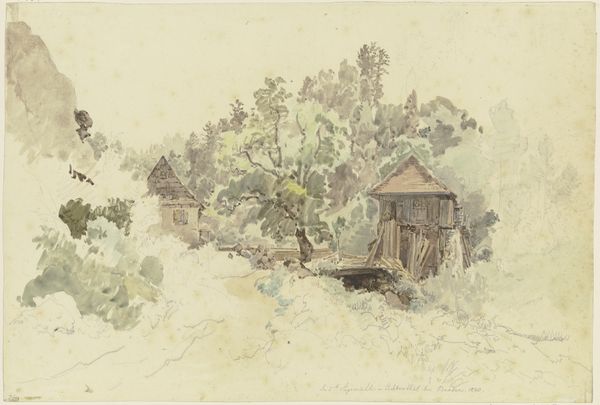
Copyright: Public Domain: Artvee
Curator: Right, let's delve into John Singer Sargent's "Camp with Ambulance," created in 1918 using watercolor. What's your initial impression? Editor: The dominant visual is the tent at the forefront; the light is wonderfully delicate and sun-drenched, which lends a sense of uneasy calmness to an otherwise chaotic subject matter. Curator: It is striking, isn't it? Sargent made this work during World War I when he was commissioned by the British War Memorials Committee. The imagery moves us, in part, through his status as an outsider. While considered an American artist, he was essentially embedded to observe and document. He wasn't tasked to engage with any of the narratives of nationalism that were developing around him. Editor: And his approach to representing the war—the choice to emphasize the Red Cross and auxiliary support over direct combat—that decision resonates with loaded symbolism. The ambulance, the figures at rest: he is consciously shaping a message beyond merely reporting events, it seems to address something more subtle about humanity. Curator: Precisely. Sargent uses his distinct impressionistic plein-air style to shape the viewers' understanding of the frontlines, the social sphere, and the impact of war on those who populate this world. Consider also how war artists had, historically, depicted battle and glory, but in the Great War artists sought new ways of conveying its unprecedented industrial nature. His contribution moves toward empathy over the epic. Editor: And the tent as the central figure--a makeshift home, and that potent red cross sign on the ambulance; these are symbols of aid and salvation. He creates that juxtaposition of danger and care which highlights our shared humanity when threatened with destruction. It makes us pause to ask what refuge meant then, and means to us now. Curator: Ultimately, "Camp with Ambulance" reminds us that how we choose to represent war carries substantial social and political weight and impacts future recollections. Editor: The ability of these visual motifs to speak to those profound emotional and existential elements is really moving; the choice of using the symbols of aid is indicative of our cultural values and will remain significant long into the future.
Comments
No comments
Be the first to comment and join the conversation on the ultimate creative platform.
